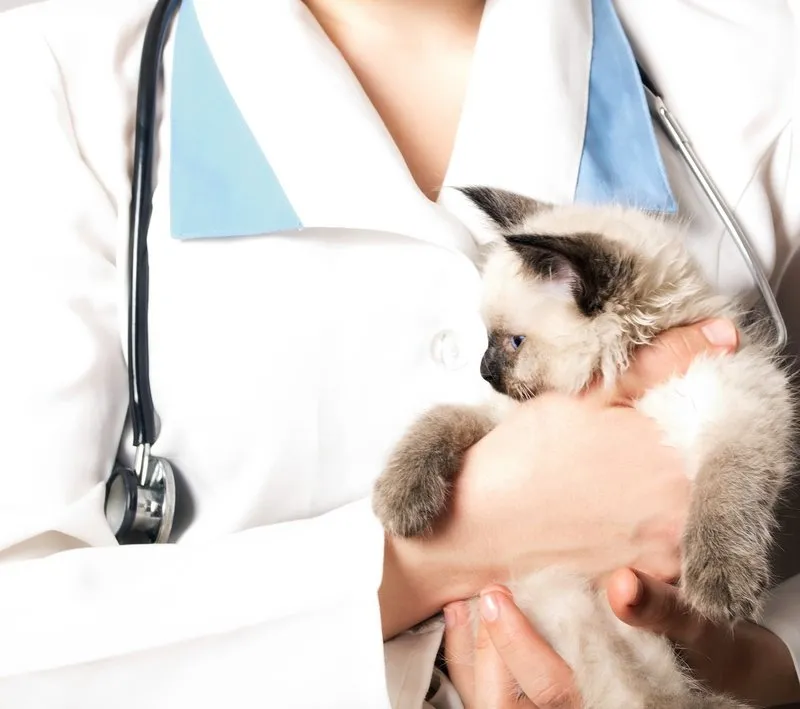It’s a good idea to bathe your kitten at least a few times. This way, if she needs bathed later in life, she’ll be used to the sensation. Use these five steps from a West Greenwich vet to bathe your kitten.
Gather Your Equipment
Before beginning, you’ll need to gather the necessary supplies. You’ll need a large soft towel—perhaps two—a washcloth, cat-formulated shampoo, a cup or jug, and a few cat treats. You may want to put a rubber mat down in the tub or sink to prevent your kitten from slipping.
Stand Kitty in the Water
Fill the tub or sink with an inch or two of lukewarm water. Try standing your kitten in the water, so just her paws get wet. If she struggles or becomes agitated, remove her, dry her off, and try again later. Don’t try to move on until your cat is comfortable standing in the water.
Wet Thoroughly
Once your cat is comfortable in the tub, it’s time to wet her down. Pour lukewarm water gently over her body from a cup or jug. Don’t let water run into her eyes or ears. If your kitten becomes agitated or tries to leap out of the tub, don’t force her to stay in—dry her off and try again at a later time.
Shampoo the Fur
If your kitten is comfortable getting wet, you can move on to the washing stage. Put a small amount of the cat shampoo on her coat and massage it throughout the fur. Use your washcloth to wipe her head, carefully avoiding her eyes, ears, nose, and mouth. Talk to your cat soothingly throughout this process to keep her calm.
Rinse and Dry
Once shampooing is done, rinse her off thoroughly with the pouring cup. Wrap her in the towel and dry her off thoroughly, praising her vigorously. Offer some cat treats to let her know she’s done a great job.
Our Advice on Steps to Give Your Kitten a Bath in 2024
How often should you bathe your kitten, and does this frequency change as they grow older?
Bathing a kitten a few times early in life is beneficial for acclimation, but frequent baths are unnecessary for most cats, thanks to their self-grooming habits. As kittens grow, bathing should be reserved for when they are particularly dirty or have gotten into something hazardous. For adult cats, the need for baths often decreases unless specified by a veterinarian for medical reasons. Always use cat-specific shampoo and consult with a veterinarian, like one from West Greenwich, RI, for advice tailored to your cat’s health and breed-specific needs.
Are there any specific breeds of cats that require more frequent bathing than others?
Yes, certain cat breeds require more frequent bathing due to their unique coat characteristics or skin needs. Breeds with dense or long fur, like Persians and Maine Coons, benefit from regular baths to prevent matting and reduce hairballs. Hairless breeds, such as the Sphynx, need more frequent baths to remove oil buildup on their skin, typically every week or two. Always use a breed-appropriate shampoo and consult with a veterinarian to establish a bathing routine that supports the health and comfort of the specific breed.
What are the signs that your kitten may need a bath?
A kitten may need a bath if it exhibits signs of dirt or grease in the fur, an unusual or unpleasant odor, sticky or matted fur, or if it has come into contact with a potentially harmful substance that it cannot safely groom out itself. Additionally, excessive scratching or visible skin irritations might indicate a need for a medicated bath as recommended by a veterinarian. Regular grooming checks are essential to decide when a bath is necessary for maintaining the kitten’s hygiene and overall health.
How can you help your kitten feel more comfortable and secure during the bathing process?
To help a kitten feel comfortable and secure during the bathing process, start by introducing it to water gradually. Use a calm, soothing voice to reassure the kitten throughout the bath. Ensure the water is lukewarm, not hot or cold, to avoid shock. Place a rubber mat in the sink or tub to prevent slipping, which can cause panic. Keep the bathing sessions short and reward the kitten with treats and praise afterward. Familiarizing your kitten with the bathing process early on can significantly reduce stress.
What are some alternatives to bathing, such as spot cleaning or dry shampoo, for times when a full bath is not necessary?
For times when a full bath isn’t necessary, spot cleaning and dry shampoo are effective alternatives. Spot cleaning involves using a damp cloth or pet wipes to clean dirty or sticky areas on the kitten’s coat without a full bath. Dry shampoo, formulated specifically for cats, can be used to absorb excess oil and dirt from the fur; simply apply the powder and brush it through the coat. These methods are less stressful for the cat and convenient for maintaining hygiene between full baths. Always ensure products are safe and designed for feline use.
Consult your West Greenwich veterinary professional for more advice on successfully bathing your cat, as well as a recommendation on a good quality cat shampoo.





!Social Media Icons